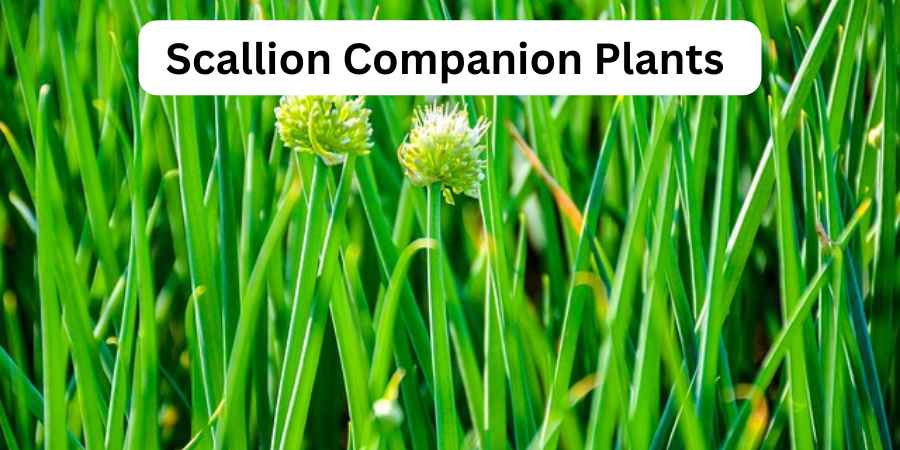Last Updated on June 3, 2025 by Jocelyn
Growing scallions successfully starts with choosing the right plant partners. Companion planting is a traditional gardening method where certain plants are grown together for mutual benefits.
Scallions do especially well when planted near carrots, beets, lettuce, tomatoes, and peppers. These companions can improve growth conditions and help keep common pests away.
For example, carrots loosen the soil, while lettuce helps retain moisture around the base of the scallions.
It’s equally important to know which plants to avoid. Scallions should not be planted near beans or peas, as they may interfere with their development.
By understanding which plants work best together, you can create a harmonious garden that leads to a more positive and fruitful growing season.
Table of Contents
ToggleBenefits of Companion Planting
When I started gardening, I quickly noticed how useful companion planting can be. Planting scallions with other plants helps to keep pests away and enhances the soil.
This technique also attracts beneficial insects and promotes a healthier, more sustainable garden.
| Benefit | Description |
| Pest Protection | Scallions keep harmful insects away from other plants. |
| Improved Soil | Their roots break up compacted soil, enhancing water and nutrient absorption. |
| Weed Suppression | Dense growth reduces the need for manual weeding. |
| Attraction of Beneficial Insects | Attracts bees and butterflies, aiding plant reproduction. |
| Increased Yield | Helps nearby crops produce more. |
| Better Environment | Creates a more favorable growing environment. |
| Sustainability | Promotes a healthier, more sustainable garden. |
Best Scallion Companion Plants
Looking to supercharge your garden? Scallions can repel pests and enrich the soil, benefiting nearby plants. I recommend planting them with the right companions for increased growth and positive effects.
From my experience, scallions also provide increased nutrition to their garden neighbors.
1. Carrot
Growing carrots with scallions is a great idea for any garden. Carrots prefer loose soil and need adequate sunlight to grow well.
The taproots of carrots improve soil structure and help aeration and water pathways, which benefits neighboring plants.
Planting onions near carrots helps keep pests like the carrot fly away, ensuring a healthy harvest of bright-colored carrots. Moisture and nutrients are essential for supporting the roots and rich foliage of carrots.
In my own kitchen, I love using homegrown carrots and onions together as they complement each other both in the garden and on the plate.
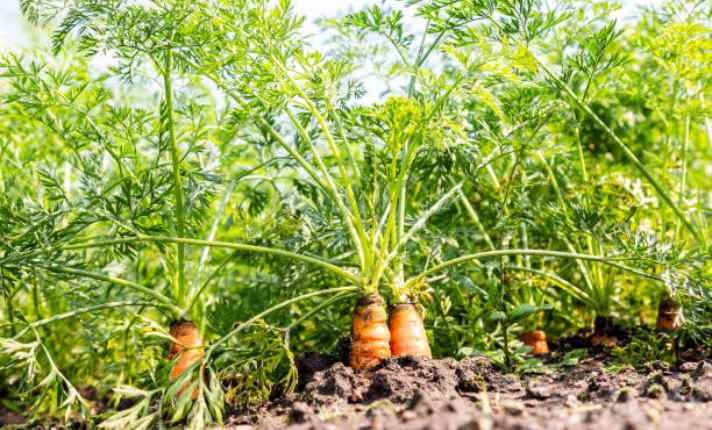
2. Cabbage
Cabbage thrives in a garden with scallions, which keep pests like worms and loopers away.
Part of the Brassicaceae family, including kale, cauliflower, broccoli, kohlrabi, and Brussels sprouts, cabbage loves well-drained, compost-enriched soil.
It adapts to slightly acidic to neutral pH levels and grows robustly with enough sunlight and moisture, offering both culinary versatility and garden elegance.

3. Beet
When you plant beets near onions, it helps both plants. The onions keep pests like aphids and flea beetles away from the beets. This helps the beets grow better and ensures a good harvest.
Also, the onions scare away deer and rabbits that might try to eat your beets and destroy them. I’ve seen this in my own garden where my beets grew strong and healthy because of the onions nearby.
This trick really helps in growing a great garden without too much trouble from insects like thrips.

4. Lettuce
Growing lettuce with scallions in the garden makes a great combination. Lettuce loves moisture and thrives in well-drained soil with a pH of 6.0 to 7.0, flourishing in partial shade and fertile soil.
It conserves soil moisture, provides ground cover, and suppresses weed growth. Lettuce and onions don’t compete due to their different roots – lettuce has long roots, while onions have short ones, which help repel pests.
In my experience, this pairing enhances the garden’s appeal and boosts the health of the plants.
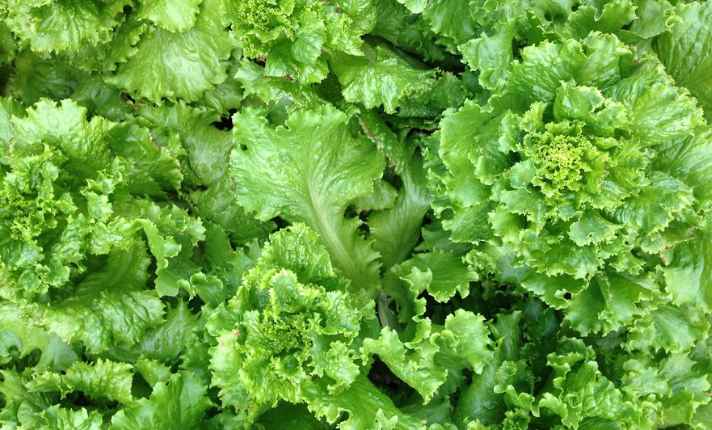
5. Tomato
When growing tomatoes with scallions, ensure the soil pH is between 6.0 and 7.0, and provide plenty of sunlight and moisture. Rich soil and dense foliage help suppress weeds.
Onions deter pests and insects, while Basil and Marigolds attract pollinators and enhance culinary dishes. Beans, Brussels sprouts, and kale improve soil nutrients and prevent diseases, ensuring healthy tomato growth and a fruitful garden.

6. Marigold
Marigold is a great companion for scallions, flourishing in well-drained, loamy soil with a pH of 6.0 to 7.0. These vibrant flowers attract bees and butterflies, boosting garden biodiversity.
Their aromatic foliage repels harmful insects and pests, protecting onions and nearby plants. From my experience, marigolds add colorful beauty and require full sunlight and consistent moisture.
They attract beneficial bugs that eat pests, safeguarding scallions and improving garden health.
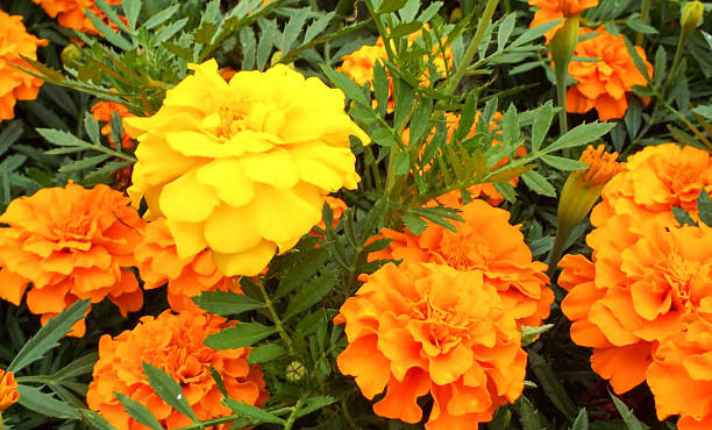
7. Swiss Chard
Swiss chard is a thriving plant with vibrant leaves and stems that need moderate moisture and well-drained, nutrient-rich soil. Its pH range is between 6.0 and 7.0, ensuring sturdy roots.
Growing next to onions, Swiss chard helps by providing partial shade, reducing evaporation, and enriching the conditions.
This keeps the soil moist and cool, making onions more resistant to pests. The shade from Swiss chard also keeps the soil staying healthy.

8. Chamomile
This herb has a lovely fragrance that makes the garden beautiful and its special properties are amazing. It has antibacterial and antifungal abilities that stop fungus growth.
The aroma attracts good insects that eat harmful bugs, destroying pests. Plus, you can make tea with it. You will feel the difference in the flavor of your onions when you invest in growing chamomile.
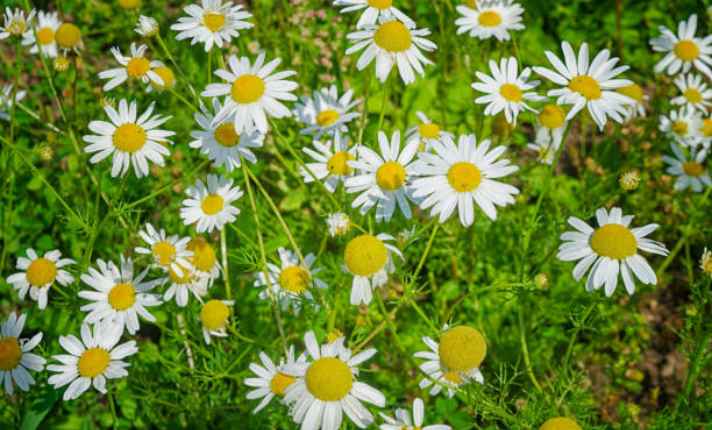
9. Savory
Scallions grow well next to savory plants. These aromatic herbs flourish in neutral, well-drained soil and need ample sunlight. They infuse dishes with a delightful taste and have many culinary uses.
Savory plants help onions grow sweeter and keep pests away. Their leaves attract beneficial insects and contribute to soil health. Summer savory in particular is great for these benefits.

10. Pepper
Pepper plants are great companion plants for scallions. They thrive in loamy, well-drained soil with a pH of 6.0 to 7.0. Their bushy foliage allows sunlight to reach the scallions’ roots without competition.
Peppers offer many benefits, like deterring pests with their pungent compounds and adding diversity to the garden. They also attract pollinators and add a spicy flavor to your food.
I love how peppers make my garden more vibrant and help my scallions flourish by providing essential nutrients and consistent moisture.

11. Eggplant
In my garden, I love planting eggplant alongside scallions. The eggplant flourishes in fertile, loamy soil with adequate moisture and proper spacing.
This resilient plant adds grandeur and offers many benefits by shading the earth and reducing weed growth.
Planting onions and tomatoes nearby lets me prepare a fresh ratatouille for our meals. Additionally, eggplant keeps rodents away, promoting the overall health and growth of my garden.
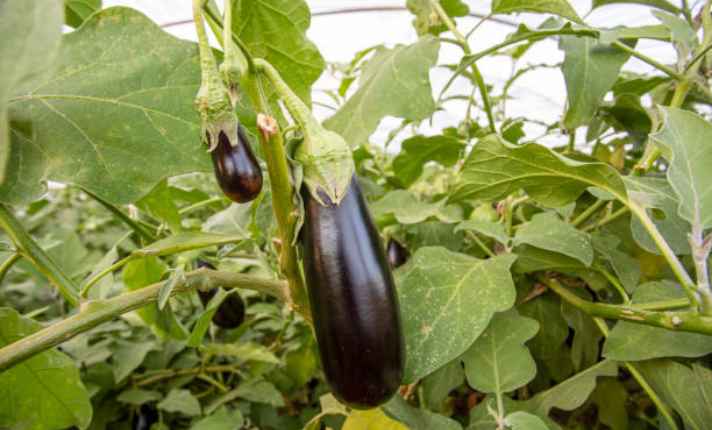
12. Strawberry
Strawberries grow well in loamy soil with a pH between 5.5 and 6.5. They love full sunlight and need consistent moisture to produce their delicate fruits and lush foliage. Planting scallions or onions nearby helps in keeping pests and furry critters away.
Their dense foliage is great for suppressing weed growth and they attract pollinators, which is invaluable for other plants.
The sweet strawberries offer many benefits, including attracting insects that help your garden flourish.
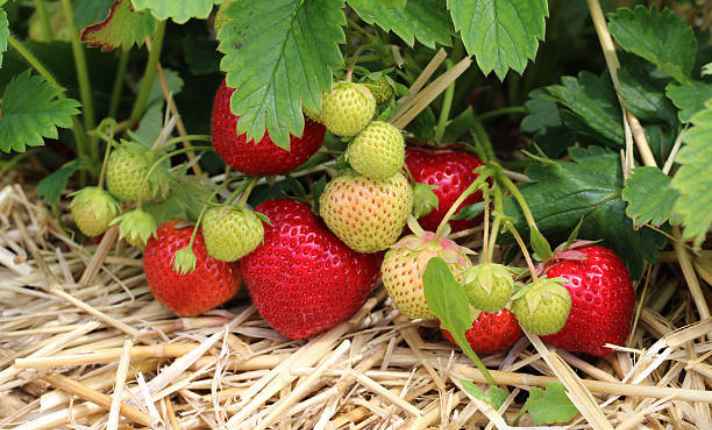
13. Parsnips
Parsnips are excellent companion plants for scallions. They do well in fertile soil with a pH between 5.8 and 7.0. I enjoy seeing their delicate flowers in my garden.
They need consistent watering to keep their roots from becoming tough and fibrous. Parsnips improve soil structure and attract beneficial insects.
When planting parsnips, use loose and sandy loam for best results. They require moderate care. Onions and parsnips together help keep pests and rodents away, ensuring a good harvest.
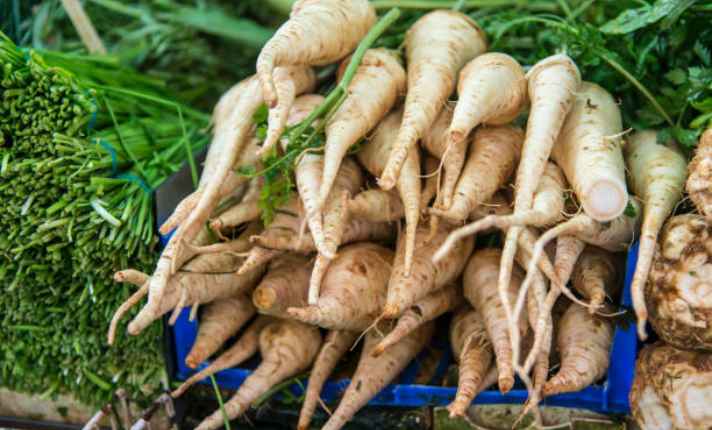
What Not to Plant With Scallion
In my garden, I discovered that some plants can have detrimental effects on scallions. These plants tend to consume more nutrients and water, leaving scallions struggling to grow.
I noticed that growing these plants nearby attracted harmful insects and even changed the taste of my scallions.
To ensure healthy development, keep scallions away from these enemy plants to avoid negative effects and ensure they grow strong and healthy.
1. Beans
In my garden, beans are amazing companions for other plants. They thrive in well-drained soil and bask in sunlight, adding vitality and greenery. These leguminous plants enrich the soil with nitrogen, promoting healthy growth.
However, I learned to plant beans and onions separately to prevent abnormal growth. This strategy ensures each plant gets the sustenance it needs, bringing out the garden’s true essence and bounty.
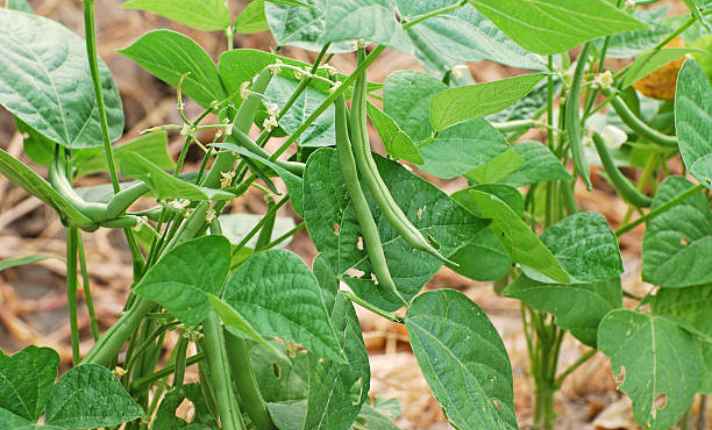
2. Asparagus
Asparagus is a wonderful companion for scallions. It thrives in sandy soil with ample sunlight and warm summers. This nutritional plant adds a touch of grace to your garden landscapes.
To avoid abnormal growth and competition for nutrients, plant asparagus and onions separately.

3. Sage
In my garden, I’ve found that sage is not a good companion for scallions. Sage thrives in well-drained soil, whether it’s sandy or loamy, and needs full sunlight and moderate moisture to keep its foliage aromatic and sturdy.
However, it doesn’t get along with onions or scallions due to different growing conditions.

To learn more about companion planting, check out my guides:
- Cauliflower companion plants
- Yarrow companion plants
- Zinnia companion plants
- Echinacea companion planting
Tips for Successfully Growing Scallions
Growing scallions, also known as green onions or spring onions, can be a rewarding experience for any gardener. Here are some detailed tips to help you grow healthy and abundant scallions.
Choosing the Right Location
Scallions thrive in a sunny, open site with well-drained, fertile soil. They prefer full sun but can tolerate some shade. Ensure the planting site receives at least six hours of direct sunlight daily.
Soil Preparation
The soil should be loose and well-draining to allow for proper aeration and water infiltration. Adding organic matter, such as compost or aged manure, can improve soil structure and fertility
Scallions are heavy feeders and require regular fertilization, particularly with nitrogen, which promotes leafy growth. Using a balanced fertilizer with a higher nitrogen content, such as a 10-10-10 or 20-10-10 blend, can provide the necessary nutrients
Planting Methods
You can grow scallions from seeds, sets, or even kitchen scraps. Here are the methods:
- From Seeds: Start seeds indoors 8-10 weeks before the last frost. Transplant seedlings outdoors 2-4 weeks before the last frost, after hardening them off. Alternatively, direct sow seeds in early spring as soon as the soil is workable.Thin seedlings to about 2 inches apart once they emerge.
- From Sets: Plant sets directly in the garden in early spring.
- From Scraps: Regrow scallions from the root ends of store-bought scallions. Place the root ends in water on a windowsill, and new shoots will emerge in a few days.
Watering and Care
Scallions have shallow roots and require consistent moisture. Water them regularly, especially in dry weather, to speed growth and prevent bolting (premature flowering).
Ensure good air circulation around the plants to keep the tops dry and fend off moisture-related diseases.
Harvesting
Scallions are typically ready to harvest 8-12 weeks after sowing. Harvest the largest plants first to allow the remaining ones more space to grow. For a continuous supply, consider succession planting new crops every few weeks.
By following these tips, you can enjoy fresh, flavorful scallions from your garden all season long.
FAQ’s
Q: Do Scallions Have Deep Roots?
A: Scallions have shallow root systems and need moist soil. Some people like to hill the soil to get more white stems and less green tops. They don’t have deep roots, making them easy to grow in many spots.
Q: How Many Times Can You Harvest Scallions?
A: Scallions can be harvested several times throughout the growing season. People usually start harvesting them once they reach at least 8 to 12 inches tall and about a half inch thick.
Depending on their maturity level, you can enjoy fresh scallions several times in a single season.
Q: How to Plant Scallions?
A: When planting scallions, use rich, well-draining soil and ensure constant moisture. Their shallow root systems need protection from weeds, which can be managed with mulch and tightly packed plantings.
Shallow watering is recommended throughout the season to retain moisture and help them grow well. The addition of mulch will keep weeds down and protect the roots.
Q: How Long Do Scallions Last?
A: If you plan to use scallions within their lifespan, it’s good to know how long they can stay fresh. Scallions can stay fresh for up to 3 weeks in the fridge.
You can also keep them frozen for up to 4 months. This way, you can always have alliums ready for your meals!
Conclusion
Adding scallions to your garden can significantly improve the health and growth of your other plants. I’ve found that planting scallions helps keep pests away, resulting in stronger and more vibrant vegetables. Not only do they enhance growth, but they also make garden maintenance easier.
Based on my experience, incorporating scallions into your garden is a simple and effective way to boost your plants’ overall well-being. Give it a try, and watch your garden thrive!
